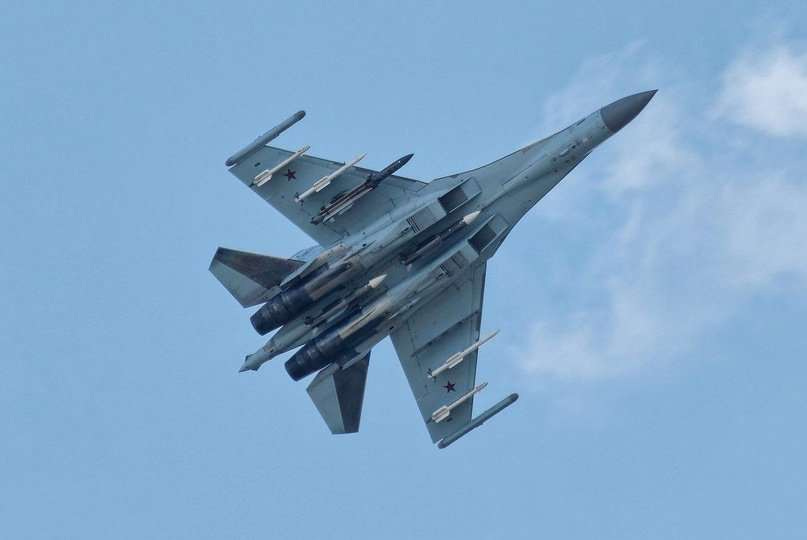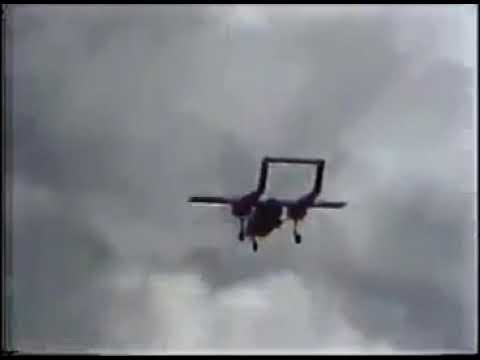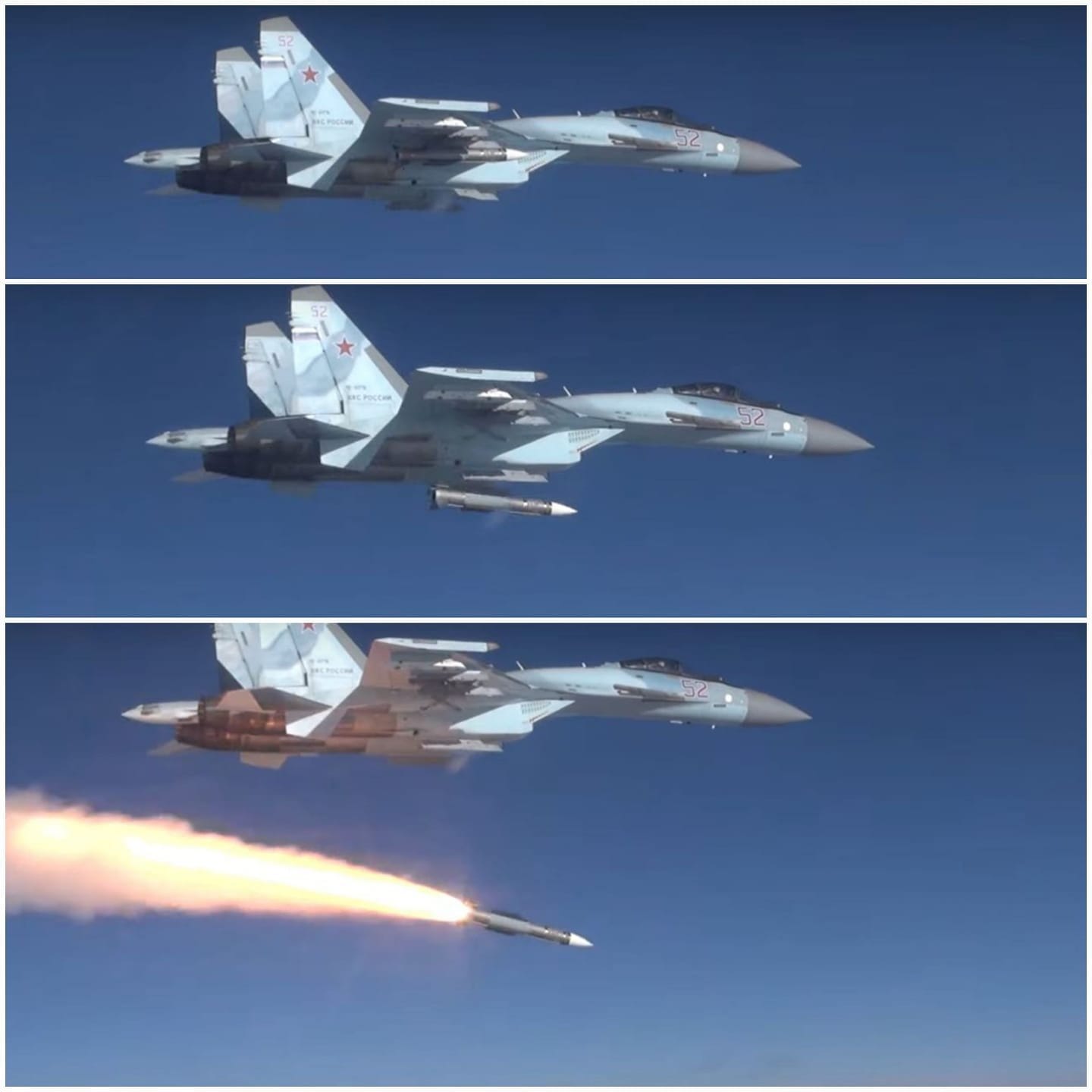Hello everybody!
Today, I’m going to continuine answering different of questions related to the (possible/probable/likely) deliveries of F-16AMs to Ukraine, and their possible/probable utilisation in combat.
4.) One of most-often-asked question was something like, ‘the commentator in that video says that the F-16 is a highly manoeuvrable jet’. How important is that?
Oh yes! Have no doubt: ever since it entered service, F-16 is one of ‘most manoeuvrable’ fighter jets anywhere on this planet. Means: can fly some of tightest turns of all the fighter jets around. Indeed, we’ve seen it dogfighting – and outturning, and then gunning down (!) – even such nimble aircraft like Rockwell OV-10 Bronco. Should there be any doubts, please check this video taken during the coup in Venezuela of 1992 (pay attention at the Bronco’s big and straight wing: such is ideal for improving the manoeuvrability of the aircraft; unsurprisingly, and as can be seen in this video, the Bronco-pilot made the task for the F-16-pilot really hard):
AFAIK, only MiG-29 is a ‘match’ for F-16 in this regards.
However…. Cold fact is that – no matter the type – combat aircraft are spending something like 99.99999….% of their service life flying straight. Just like airliners. This is so because flying all the time in hard turns wouldn’t bring any aircraft anywhere. At least not further away than some 400-500 metres from the end of the runway from which it took off. To get from point A to point B, aircraft have to fly straight. And that’s what they’re doing most of the time.
Above all, modern air combat is not working so as that the combat aircraft must get behind each other in order to bring their machine guns, automatic cannons, or even missiles to bear. Sure, that’s still ‘ideal’, but not absolutely necessary, like this was the case for most of the last 100 years.
In modern air warfare, the mass of manoeuvring is taking place well before the first shot is fired. Indeed, modern air combats are directly comparable with chess: see bringing own figures into advantageous positions before engaging.
…or disengaging (preferably: on time) because one couldn’t.
Because of this, in modern air warfare, it’s the speed that matters the most. Manoeuvrability matters only once plenty of other things went wrong. Foremost when:
a) own long-range weapons have failed to kill the target from optimum range (the further, the better);
b) when both own-, and enemy’s longer-ranged weapons have missed, and thus the two aircraft ‘merged’: approached each other to within visual range and engaged in close-range air combat.
Indeed, it can be said that in modern-day air combat, ‘manoeuvrability’ – as much as highly appreciated by air-show visitors, even by pilots during different peace-time-exercises – is of little use. Here’s a good and recent example for ‘why’: when Houthis were trying to target Saudi and allied fighter jets underway over Yemen with SAMs, targeted jets did not try to ‘outmanoeuvre’ incoming missiles. This would be pointless alone because of the fact that some of weapons in question can ‘pull (much) more gs’ (i.e. turn much harder) than any human-operated aircraft could. Instead, the Saudis and allies were ‘accelerating away’: counting on the fact that the SAMs fired at them are spending most of their fuel - and thus energy and speed - just in order to climb and accelerate in attempt of reaching them. They were ‘running SAMs out of steam’.
In this war in Ukraine, there is not much difference in this regards. For example: since experiencing 2-3 ‘nasty’ surprises in air combats with Ukrainian MiG-29s, in the first few days of the all-out intervention, back on 24-25 February last year, the Russian pilots are ‘avoiding’ any kind of close-range air combats with them.
Sounds ‘great’? Are the Russians ‘cowards’?
Is ‘great’ – but in theory only. And nope, the Russians are no more cowards than USAF F-15- and F-16- pilots who had the order to shoot Serbian MiG-29s from long-ranges in 1999, and to avoid dogfights with them.
Point is that there is no ‘incentive’ for Russian pilots flying aircraft equipped with longer-ranged weapons to let themselves get involved in short-range air combats, in ‘dogfights’. Not only because the outcome of the latter is actually hard to predict, but especially because their jets are better-armed with air-to-air missiles of longer range than those of the Ukrainian air force - and because at war, nobody sane is letting the enemy take his/her shot.
Means: instead of letting PSUs nimble MiG-29s get anywhere close enough to deploy their own medium-range weapons the Russians are shooting at them with:
- R-37Ms from 100-150km away, or
- R-77s from around 50km away.
….and that before Ukrainians can ‘respond’ with their own weapons.

Here it is important to mind: the longest-ranged weapon in service with PSU’s MiG-29s and Su-27s are the R-27R and R-27ER air-to-air missiles. The former has a maximum known effective combat range of around 20-25km, the latter seems to have scored a kill over 40+ (perhaps 50 or so) kilometres (in 2001, when an Ethiopian Su-27 killed an Eritrean MiG-29).
‘On the paper’, this sounds ‘good’: indeed, in theory, the R-27ER is out-ranging the R-77.

However: Ru-27R and R-27ER are both semi-active radar homing weapons. Means: their seeker head requires constant guidance from the radar of the aircraft that launched them. All the time, until it hits (or misses) the target. That in turn means that when Ukrainian MiG-29- and/or Su-27-pilots launch an R-27 at the enemy, they have to keep their jet ‘pointed’ at least in rough direction of their target. They’re not free to manoeuvre – for example, in order to avoid any enemy missiles coming their way.
However, R-37M and R-77 have active radar homing guidance. This is why they’re also known as ‘fire-and-forget’: essentially (and much oversimplified), the weapon is guiding on its own, needs no support from aircraft’s radar, and thus the jet that launched it is free to manoeuvre at will.
Moreover, the VKS is usually operating much bigger formations than the PSU. Actually, most of the time, Ukrainian MiG-29s and Su-27s are flying as singletons, and not ‘just few’ cases are known where one of them found itself confronted by up to 20 Russians. And then some 2-3, sometimes more of these Russians started firing R-77s at it…
Is this ‘unfair’?
Wars are unfair. You either shot and kill, or you get killed. If you have a longer-ranged weapon, you are using that longer-ranged weapon to kill enemies from ranges from which they can’t shoot back.
If nothing else, ask yourself this question: why should the Russians engage in a discipline where the outcome is never 100% sure (like dogfighting)? ….and that while having sufficient supply of weapons like the R-37M long-range air-to-air missile, which has ‘something like proven’ effective combat range of 150-200km?
Thus, in usual air combats over Ukraine (those taking place ever since around 28 February 2022) this means: most of the time, Ukrainian pilots are trying to get closer to the Russians. Close enough to engage with their (shorter-ranged) air-to-air missiles, and then to guide their missiles to their targets - only to, regularly, fly into ‘entire missile walls’ of Russian R-37s and R-77s, which are forcing them into evasive manoeuvring. As soon as they are forced to evade enemy missiles, they are at disadvantage: they have to fly hard turns, they are losing situational awareness, and wasting their fuel. If they’re still alive after avoiding all the missiles coming their way, they’re more busy finding the direction back to their base, than searching for the enemy…
….and, because both R-77s and R-37Ms can pull much harder turns than even the best of Ukrainian MiG-29-pilots can sustain, much too often the result is (or was: AFAIK, no air combats were fought in this war since around May 2023) – ‘quite predictable’.
It is for similar reasons that any ‘Ukrainian F-16s’ are also going to be extremely unlikely to catch any of the Russian Su-25s that are operating much closer to the frontline than the Russian Su-34s are doing: because, no matter if they’re going to continue flying MiG-29s and Su-27s, or are going to get F-16s, Ukrainian pilots will have it very hard to get close enough to engage them with their weapons.
Overall, the next conclusion is on hand: IF (…and that remains a ‘big if’…) and when (and that’s another ‘big when’) Ukraine ever gets F-16AMs, because of the limits of the radar- and missile-range (50-60km), AIM-120C-eqipped F-16AMs are going to become only a notch more effective than currently available MiG-29s and Su-27s.
Foremost: their (potentially) superior manoeuvrability is going to be of next to no use.
Case closed.
5.) This video is explaining that F-16 is an ‘ideal hunter for Russian combat drones and missiles’.
OK, this is something I can agree with. That is: no ‘ideal hunter’, but ‘probably better than MiG-29 and/or Su-27’.
Why that?
Because ‘performances’ (especially those of processors, software etc.) of the APG-66 radar are better than those of the N019 Saphir radar (MiG-29), and while APG-66 is not that much better than the N001 Myech radar (Su-27) in terms of range and power, it is far easier to operate.
This conclusion is not something like ‘based on anti-Russian bias’, but on two facts.
Firstly, the avionics of both MiG-29 and Su-27 is ‘more than well-known’ to the Russians. They’ve made them. (BTW, indeed, the avionics of both MiG-29 and Su-27 was betrayed to the CIA by one of its designers already back in the late 1970s, while both jets were still on the drawing boards [see: Adolf Tolkachev]: thus, their avionics is more than ‘well-known’ even to US Americans.)
….and whoever knows ‘well’ about enemy aircraft’s avionics, is perfectly positioned to develop electronic countermeasures and other means of disturbing their work.
Secondly, there are combat experiences of, just for example, Ethiopian pilots. Their pilots of single-seat Su-27s (for details, please see here), have found the type not the least ergonomic; especially not when trying to deploy R-27ERs against low-flying Eritrean MiG-29s. Thus, they preferred two-seat Su-27UBs. ….and….well, sorry but: at least until the all-out invasion of Ukraine, the last year, I happen not to know any pilots with more air-to-air-combat experience on Su-27.
Anyway, the point is this: the APG-66 is offering better chances of detecting such targets like Russian Kh-101 and Kh-555 cruise missiles, and – especially – Shahed LPGMs/attack drones. Better detecting and tracking capability = most of the times F-16AMs (IF and WHEN Ukraine gets them….) will have it easier to find these and combat them. Preferably also from longer ranges than like in the case when an Ukrainian MiG-29 shot down a Shahed from such a short range, it was hit by debris and crashed…
In other cases it will be the other equipment of the F-16AM that’s going to be of good use. For example: their radar warning receivers (RWRs) are much better than those installed in Ukrainian MiG-29s and/or Su-27s. This is going to be important because VKS interceptor pilots ‘love’ to exploit the Russian cruise missile strikes to stage ‘hunts’ for Ukrainian interceptors: their MiG-31s and Su-35s are ‘trailing’ cruise missiles and/or Shaheds as these are flying into Ukrainian-controlled airspace: when PSU scrambles its interceptors to catch some of Russian missiles, MiG-31s and Su-27s are engaging them with R-37Ms. At least two Ukrainian MiG-29s were shot down that way by now.
One can hope that, thanks to better RWRs, any Ukrainian F-16AM-pilots are more likely to avoid such attacks.
Think, this is also a ‘case closed’.
(….to be continued….)






I think people are overthinking too much the F-16 coming to Ukraine.
After me is quite simple.
They need a plane to fill out he attrition due to war. (which happens either way you take it) .
Ukr is running out of older Mig-29 and Su-27. And they can't replenish their stocks. Cannibalization get you that much.
So, what you have the best candidate for replacement? What plane has a shit metric ton of spare part - they were plenty produced, could be armed with more modern weapons and could be provide in numbers to compensate the old-Soviet attritions?
F-16 in various forms and shapes.
No need to think as wunderwaffe, or magic plane, or War changer.
As always, a heartfelt thanks. I pointed your posts to some people, like me, not so versed in modern air warfare and they found it clear, concise and very formative; I wish you to know that.
Maybe I’m not “tainted” with “commercial advertising”, and may focus on the true capabilities of aircrafts in real combat situations, so all your updates are a gold’s mine to my knowledge of aerial combat. Hope other people found it as useful as me.